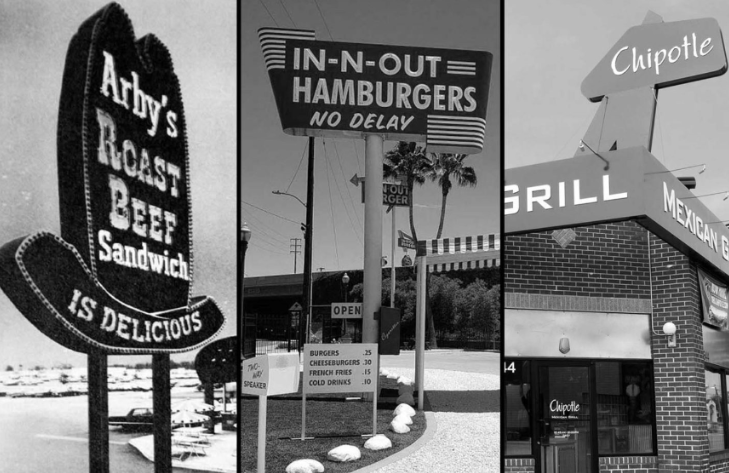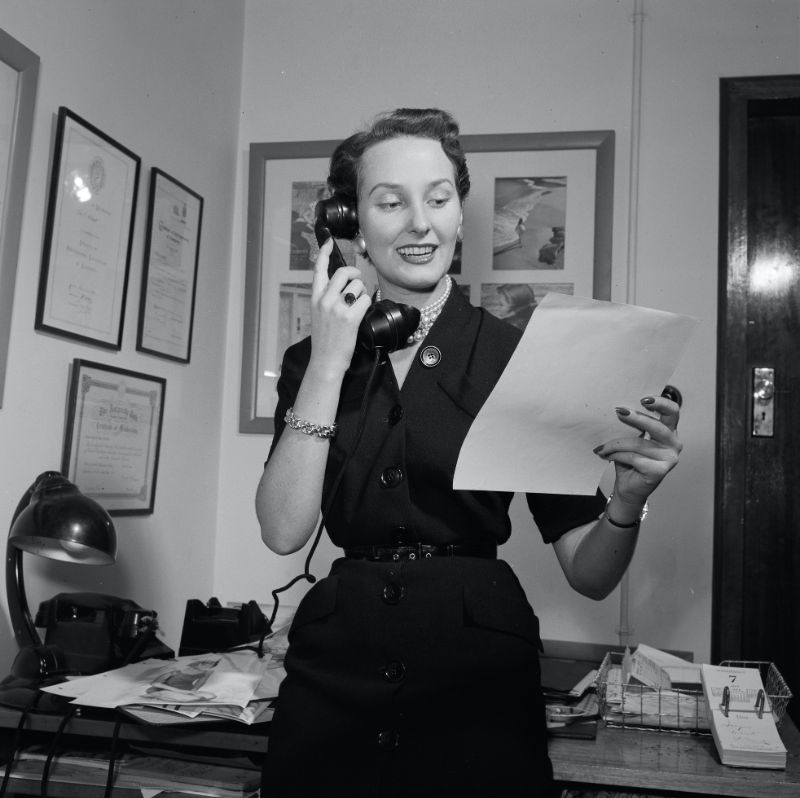Call it 19th-century L.A.’s idea of a thrill ride. Leaving the safety of granite slopes, trolley cars arced out onto a creaking, cantilevered wooden trestle, soaring over a 1000-foot sheer drop – with no reassuring seat belts or safety bars.
Even without Circular Bridge, the Mt. Lowe Railway would have been judged an engineering marvel. From the flatlands of Altadena to the Alpine Tavern on Mount Lowe, the “Railway to the Clouds” gained 3,121 feet in elevation over 5.7 miles. Climbing one of the steepest mountain ranges on the continent between 1893 and 1938, the railway twisted and wound its way up a roadbed blasted from granite. The longest straightaway stretch measured a mere 225 feet. On one segment, passengers transferred to an incline railway that scaled the mountainside at a 60 percent grade. At the railway’s upper reaches, snowdrifts buried the tracks in winter months.
But Circular Bridge, with its views of Catalina, was a highlight of a passenger’s ride as well as an ingenious feat of engineering: a bridge that made nearly a full circle while climbing a steady 4.5 percent grade. It was engineer David Joseph MacPherson’s solution to a vexing problem: without a switchback, the steel-on-steel traction railway—limited to a maximum grade of seven percent – could never achieve the elevation it needed to get to the top of the line. But rail cars require a wide turning radius, one not possible in the San Gabriel Mountains’ rugged topography. So, for a brief moment, the tracks left the mountainside, knuckles turned white, and the Mt. Lowe Railway soared over open air.
![]() |
| Photograph of the first passengers of Professor S.C. Lowe’s dramatic Mount Lowe Railway, July 4, 1893. There are a couple of dozen people in the rail car (number “9”) which is headed toward the camera on the circular bridge. The trestle structure is visible below the rails. The hotel on the mountaintop is visible at left as is the rail approach to the hotel. |
![]() |
| View of an early style open-air trolley traveling through Los Flores Canyon heading up toward the famous Circular Bridge, ca. 1893. |
![]() |
| A group of sightseers travels on one of the trolley cars on the Mount Lowe Railway as it rounds the area of track known as the Circular Bridge. Passengers can look out over the valley below, 1894. |
![]() |
| Mount Lowe railway car on circular bridge, showing car from the side, 1895. In the background at center, a steep mountain hillside covered in vegetation is visible. Wrapping around the center of the mountain, a small circular track can be seen. Several large poles are visible alongside the track supporting an array of wires. At left, at least four trestles can be seen supporting the bridge from the large drop below. Above the trestles, a small railway moves along the track. A small metallic arm extends from the top of the car and attaches to one of the wires hanging above. |
![]() |
| A Pacific Rail car carries passenger to and from Mount Lowe. Note, another car is at the top of the hill rounding the Circular Bridge, ca. early 1900s. |
![]() |
| View of a trolley negotiating its way over the famous Circular Bridge on its way to the Ye Alpine Tavern, ca. early 1900s. |
![]() |
| View of one the trolley cars on the scenic Mount Lowe Railway (later the Pacific Electric Railway) as it rounds a curve on the famous Circular Bridge, which seemed to hang out over the canyon; more tracks are visible on an upper grade, which look graveled over. |
![]() |
| Postcard view of the Circular Bridge of the Mount Lowe Railway with the San Gabriel Valley in the background. |
![]() |
| A Mount Lowe Railway car with passengers passes through a section of the track known as the Granite Gate, 1898. |
![]() |
| A side view of an empty trolley car of the type used on the Mount Lowe Railway by the new owner, Pacific Electric Railway, ca. early 1900s. |
![]() |
| Postcard view showing the new Pacific Electric Railway trolley on the Alpine Division Section of the Mt. Lowe Railway, 1907. One could get some spectacular views of the city down below. |
![]() |
| View of the Circular Bridge of Alpine Division of Mt. Lowe Railway and the valley below, 1907. |
![]() |
| Diagram illustrating the various phases of ascent up to Mt. Lowe including all the key structures. |
![]() |
| Close-up view of the Circular Bridge. Tourists would travel on this line between Echo Mountain and Mount Lowe, 1908. |
![]() |
| A 1914 Metz Roadster poses for a publicity picture on Circular Bridge. Echo Mountain is at far left. The above photo was featured in the Pasadena Star (Sept. 10, 1914) where the headline read: “Five thousand is the number of autos: That many machines are owned in Pasadena and vicinity.” |
![]() |
| A view of one the trolley cars on the Mount Lowe Railway (Pacific Electric Railway) as it rounds a curve on the Circular Bridge, 1915. |
![]() |
| Postcard view of Circular Bridge and beyond, 1915. |
![]() |
| A trolley car on the Mount Lowe Railway travels through the section known as the Circular Bridge, 1915. |
![]() |
| A Pacific Electric Railway car travels through the San Gabriel Mountains on one of the sections leading to and from Mount Lowe called Granite Gap, ca. 1900s. |
![]() |
| A view of an open sided trolley car about to cross one of the many bridges on the Mount Lowe Railway line (Pacific Electric Railway), ca. early 1900s. |


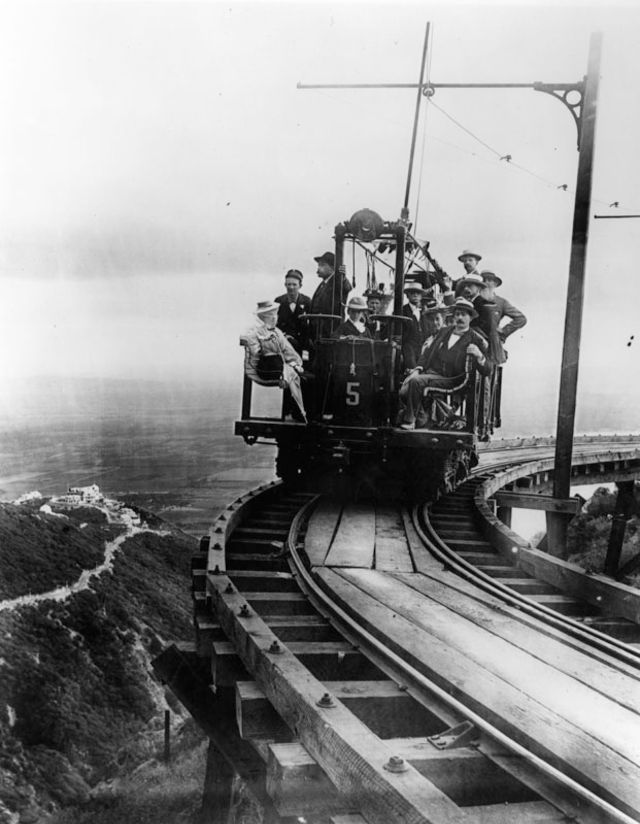
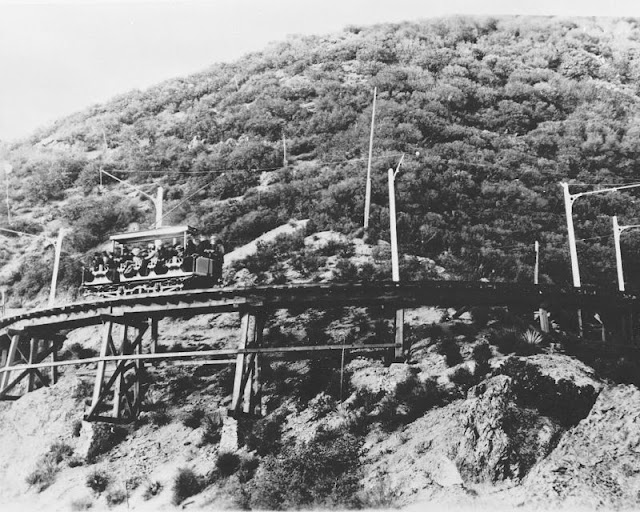





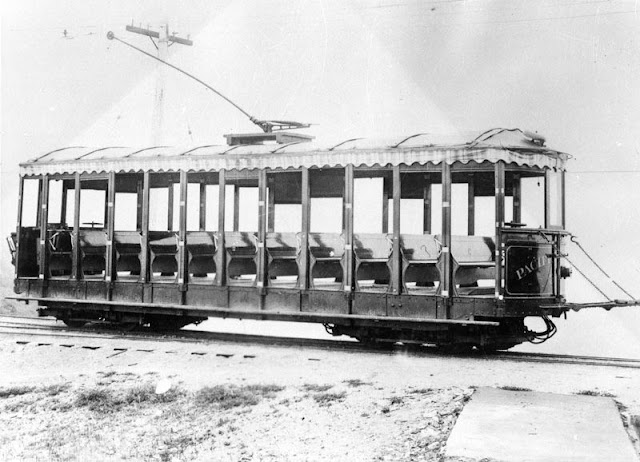
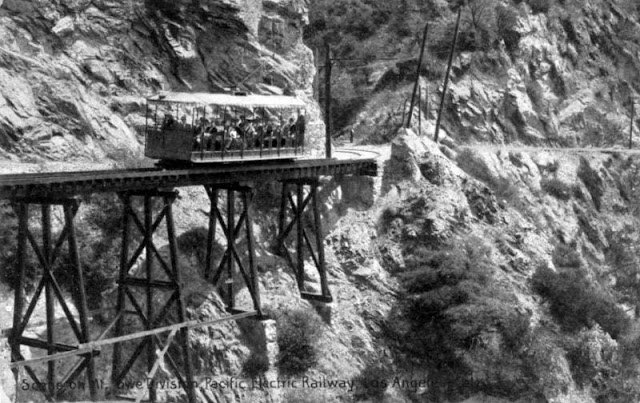
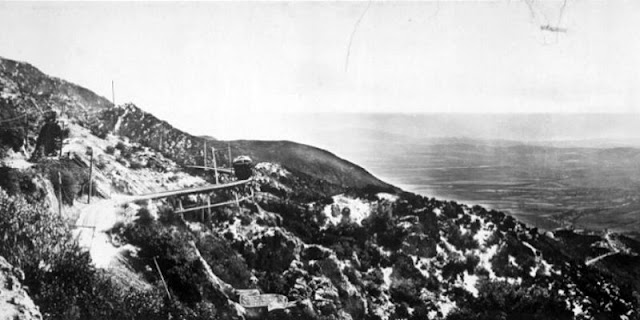

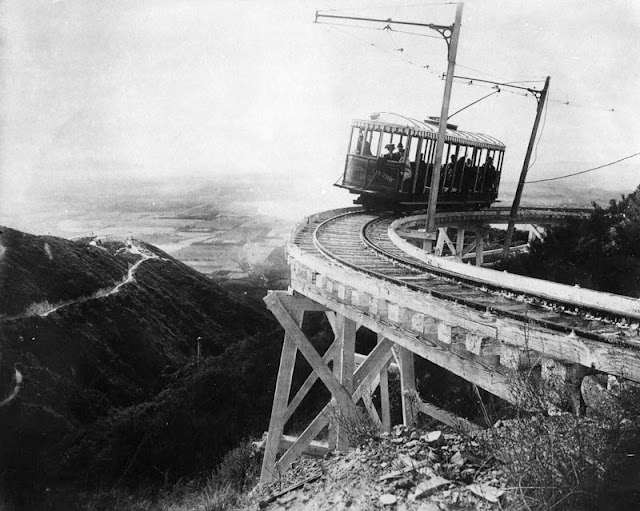
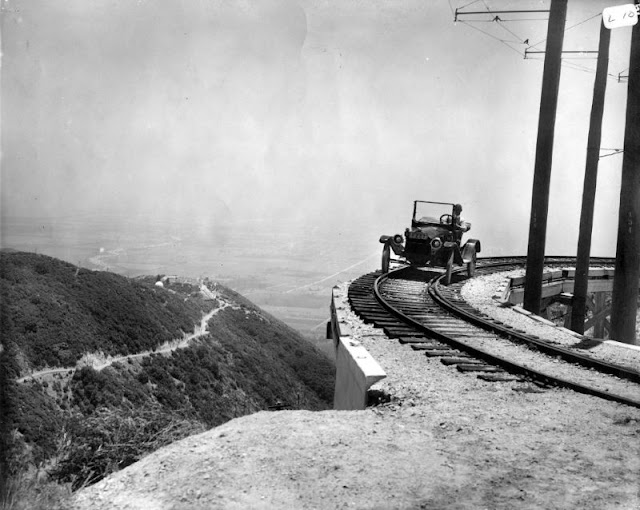


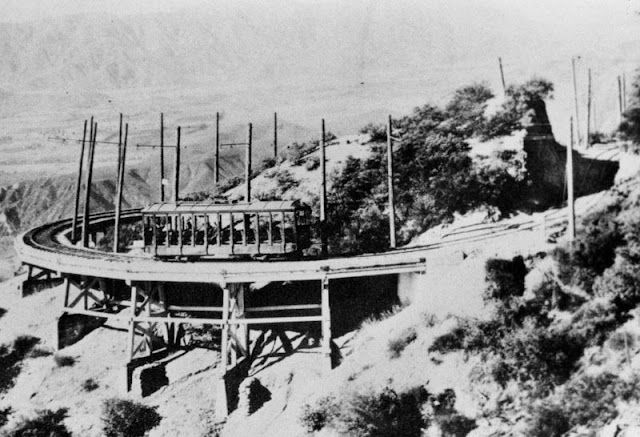

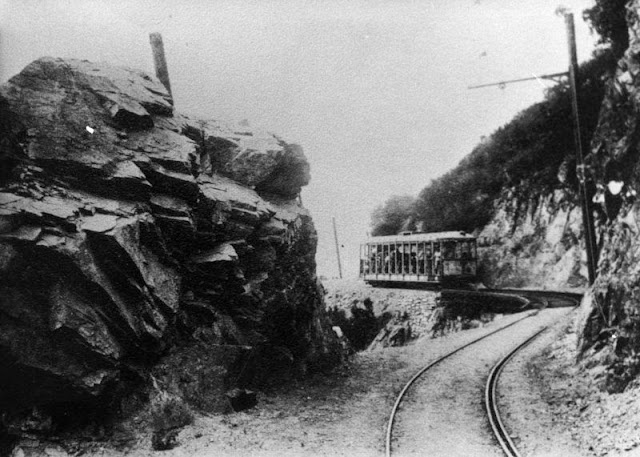
-1706795029x1200.jpg)

